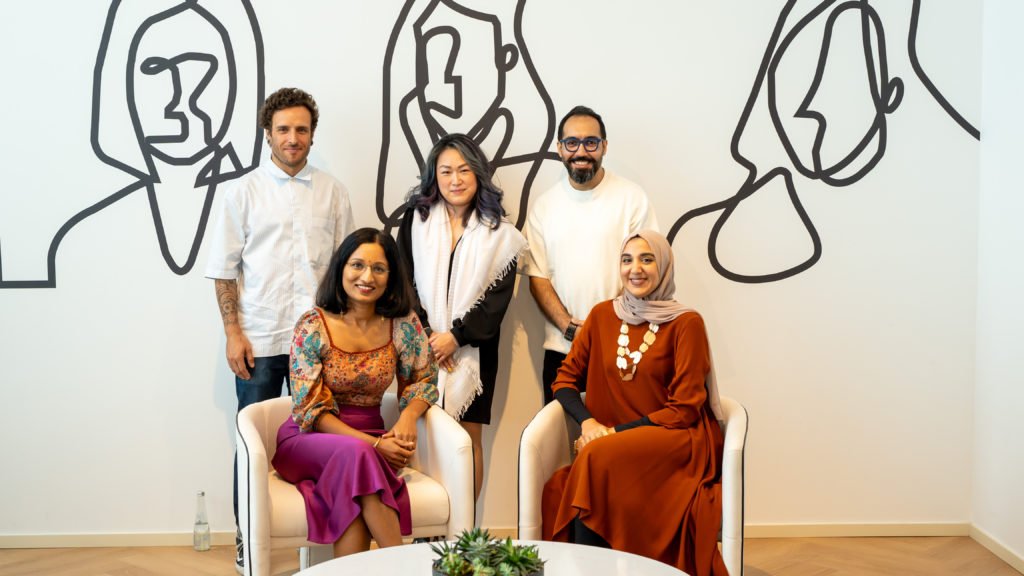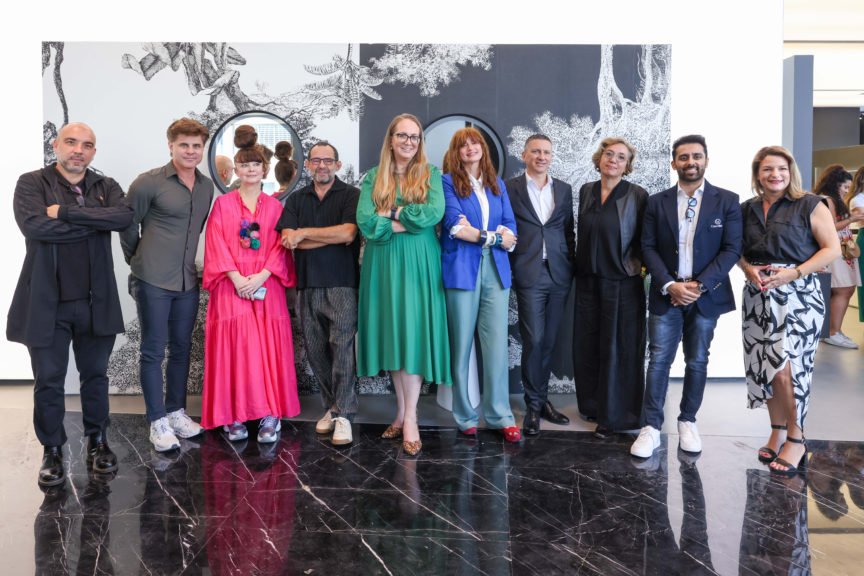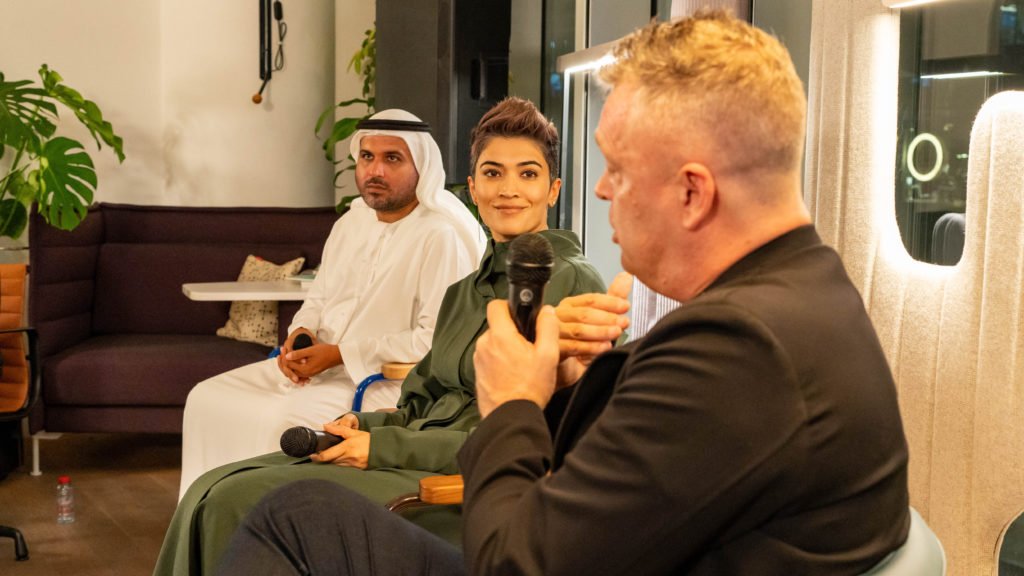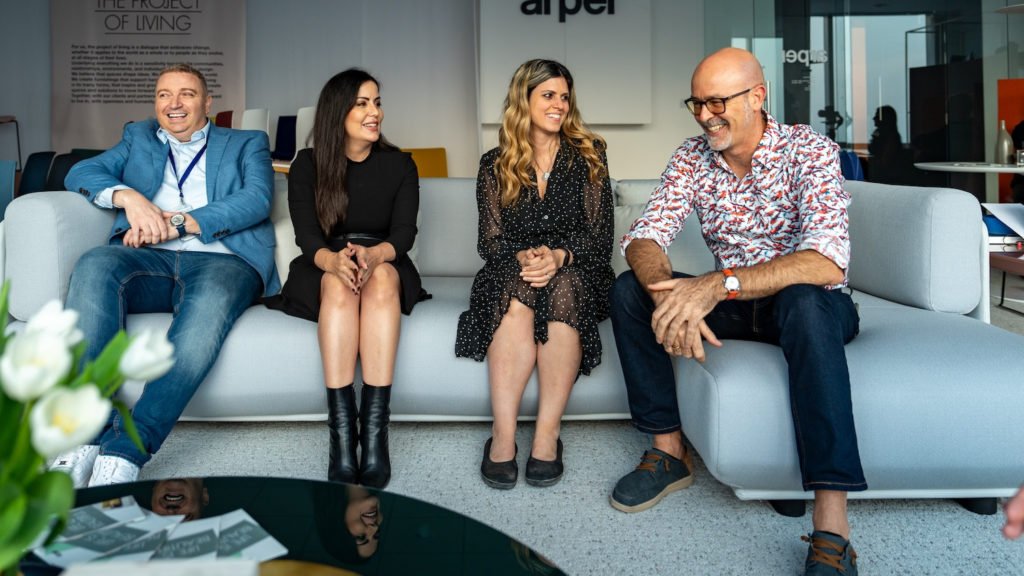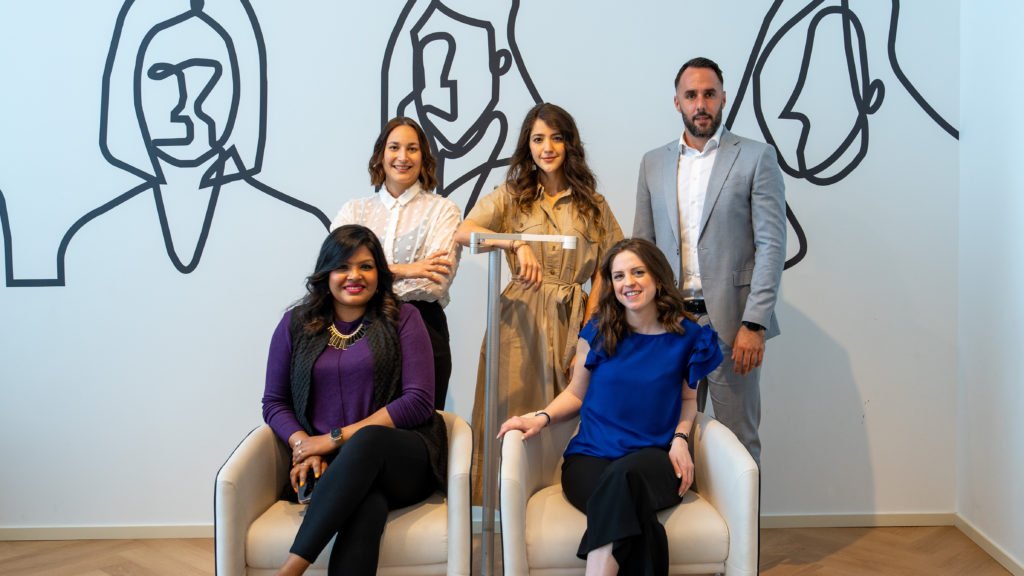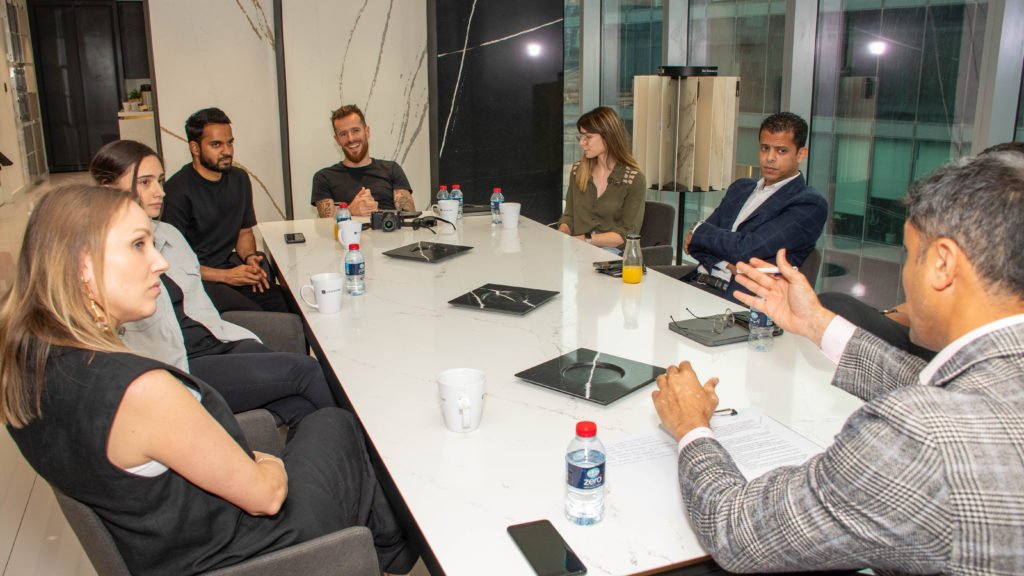We talk a lot about sustainable design… but it’s still an umbrella term. The topic of our most recent panel discussion was to have an exhaustive conversation on the state of the planet and what can be done from an A&D perspective. The event also marked the launch of the latest innovative Aeron chair by Herman Miller, made with ocean-bound plastic. Same design. Same comfort. Now more sustainable.
In fact, this latest release by Herman Miller is what sparked the need for a debate on products and their journey towards a more sustainable existence, particularly in our built environment.
Together with our experts, we discussed our planet’s depleting resources, sustainable design, and what correct manufacturing processes are currently in place.
THE EXPERTS
From left to right: Ben Ashton, Associate at BDP; Dina Storey, Director of Sustainability – EXPO; Marcos Bish, Managing Director – Summertown Interiors; Nour Toubia, Senior Interior Designer – Gensler: Lindsey Malcolm, Associate Director – AESG; Scott Charon, Sustainability Manager – Global Product Innovation, Herman Miller; Stacy Stewart, Regional Director MEA – Herman Miller
The New Aeron – Classic Chair, Consciously Designed
There’s no component or process in the design and construction industry that cannot be improved with sustainable design. The new Aeron Chair made with ocean-bound plastic is a great example of that, and a good starting point for our discussion.
“Herman Miller has been using business as a force for good for years now, and we aim to preserve the environment for future generations,” says Scott Charon, Sustainability Manager – Global Product Innovation, Herman Miller. “We do that as part of our greater purpose by designing for the good of humankind. This is a project I’m particularly proud of and was personally involved in back in 2001 when we implemented the Cradle to Cradle methodology, which involves taking a deep dive into chemistry, looking at recyclability, looking at recycled content, and making sure we have a circular economy and a closed loop system.”
An admirable and notable trait of the brand is transparency. The team tries to make any and all sustainable data available to those who need it. Anything that you want to know about Herman Miller products from a sustainability perspective can be found on a platform called Ecomedes. “We’ve kicked off several sustainability-related projects since cradle-to-cradle,” says Scott. “Around 75 percent of our products are what we call ‘Design for the Environment’, and over almost half of our products are BIFMA certified.”
Designing For a Long Life
“We’re looking at new products that are going through product development, and if ocean bound plastics can be used in those lines. Our goal is to exponentially increase the amount of ocean bound plastic in all of our products going forward. It’s a win across the board because not only are you diverting plastic from the ocean but also reducing your carbon footprint.”
– Scott Charon, Sustainability Manager – Global Product Innovation, Herman Miller
It’s an impressive and bold step. But we couldn’t help but ask, will it stop at Aeron, or extend to other product lines?
“We’re absolutely looking to scale this across our entire portfolio,” confirms Scott. “We’re looking at new products that are going through product development, and if ocean bound plastics can be used in those lines. So our goal is to exponentially increase the amount of ocean bound plastic in all of our products going forward. It’s a win across the board because not only are you diverting plastic from the ocean but also reducing your carbon footprint.”
It’s also worth noting that Herman Miller have already been using ocean bound plastics in their returnable and reusable shipping containers, textiles, and a select range of storage components. Considering this mega brand manufactures a chair every 17 seconds in the US, that is a substantial differentiator for the competition.
The use of ocean-bound plastic is no trivial feat. In fact, it’s something that should be discussed and studied in design schools. Ocean plastic is a massive problem – an 86 million metric ton problem to be precise. It is equivalent to one garbage truck of plastic being dumped in the ocean every minute. Herman Miller is tackling this head on through initiatives, such as ‘Next Wave’ and using ocean bound plastics for manufacturing. Scott explains, “Ocean bound plastic is plastic that hasn’t hit the ocean yet and is within 15 kilometers of the ocean. Because the disposal process is not managed very well, or managed at all, this plastic is more than likely going to end up in the ocean. We’ve identified 234 metric tons that we’re going to be adding to our products as part of the Aeron chair.”
“We have started including ocean bound plastics in our products, but the more manufacturers we can encourage to adopt that strategy, the better it is for us. Because then, these supply chains that provide the ocean bound plastic will become more robust”
– Stacy Stewart, Regional Director MEA, Herman Miller
Awareness vs Action
There is still a large gap between strategy and execution. While manufacturers and designers are doing their part to educate clients and contractors about sustainability, there is still a long way to go. Understanding a concept is just half the battle, implementing it, or choosing to do so, is a whole other matter. So where do we stand at present when it comes to sustainable design? Have the efforts of the select few made any significant impact?
“I’d say it’s a big no,” says Marcos Bish, Managing Director, Summertown Interiors. “I know we’re passionate about sustainability, but there’s only so much we can do. I do meet like minded people who want to create partnerships as much as possible. But it’s very difficult to convince people who are not intuitive and not passionate about the environment. They find it extremely difficult to embrace sustainable design because they see it from a cost perspective. They don’t see what the benefits are other than marketing. However, it is getting better, and there’s more awareness. But I think we need more people like the ones around this table. There are other aspects to change, such as consumer behavior, and that has a lot to do with regulation. And though we hear it a lot, while we’re moving in a certain direction, there’s no real regulation around sustainability in our region that forces people to really take action. Compared to 10 years ago, we have advanced. But it’s still very slow.”
“I always say the previous generations came in a bit late to the sustainability scene. For the younger, current generation, it’s a part of who they are. This generation is so fast at learning and changing. And so aware. I’m confident we’ll see big changes in our future.”
– Nour Toubia, Senior Interior Designer, Gensler
Encouraging Clients to Invest in Sustainably Designed and Built Interiors and Products
Nour Toubia, Senior Interior Designer at Gensler, further adds how there’s a generational gap in this area. While the sustainability movement started decades ago, it is something the current generation has been better at grasping and enforcing. “I always say the previous generations came in a bit late to the sustainability scene. For the younger, current generation, it’s a part of who they are. This generation is so fast at learning and changing. And so aware. I’m confident we’ll see big changes in our future.
Ben Ashton, Associate at BDP agrees. “It’s also important to ensure that the sustainable choice is the easiest choice,” he says. “Because while we can educate, influence, push, and bring in regulation, policy and mandates, in reality if you give people a choice that’s inherently sustainable, and is also the cheapest option or the easiest or most practical, then you take the sustainability discussion off the table entirely. And we can then be where we want to be from an environmental and materials perspective.”
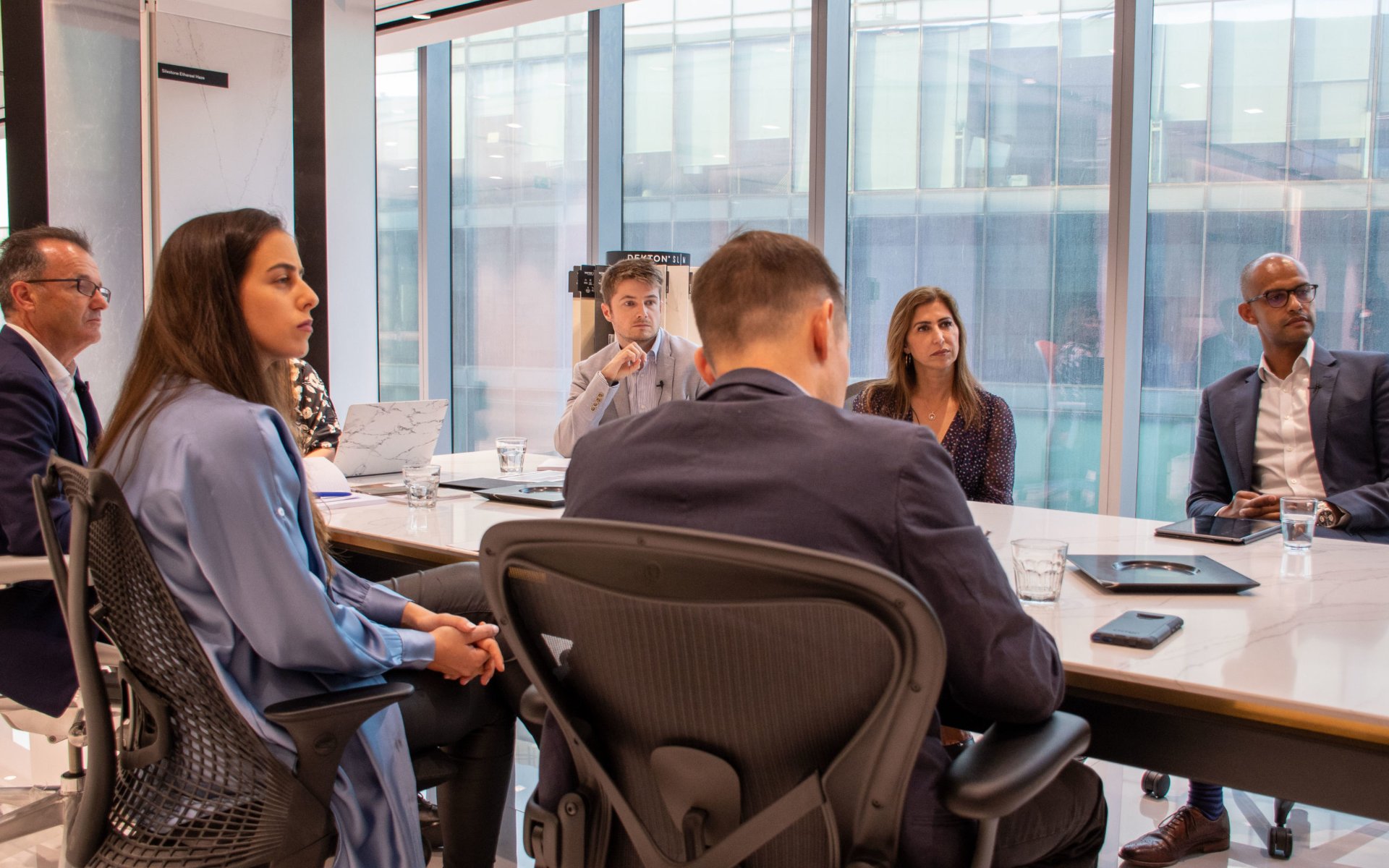
The Economics of Sustainable Products
Why are sustainable products more expensive than their unsustainable counterparts? There are several data points that indicate sustainable products or processes should be less expensive in the long run. “If you look at the materials and processes for recyclable paper, it should technically be much cheaper,” cites Marcos as an example.
So are they priced like luxury products? The answer isn’t as straightforward as it looks.
“It’s a little more complicated,” says Ben. “Take recycled paper for example – there are challenges, such as availability of the resources and materials needed. There is also a need for an infrastructure in place, or the option to piggyback another system. Unfortunately, the act of seeking out all this makes it inefficient and drives up cost. Maybe there’s something we need to provide as a society or as a region to facilitate the collection and recovery of materials, and processing the circular economy aspects of it.”
“There are other aspects to change, such as consumer behavior, and that has a lot to do with regulation. While we’re moving in a certain direction, there’s no real regulation around sustainability in our region that forces people to really take action.”
– Marcos Bish, Managing Director, Summertown Interiors
On the topic of pricing, Scott explains from a manufacturing standpoint. “It is an economic issue, and we’ve grappled with that when we replace materials with more sustainable ones,” he says. “Sometimes the less environmentally friendly materials are far less expensive. This creates a real dilemma. A good example of this is electrical wiring. Back in the early 2000s, we replaced the electrical system for our campus products from PVC to non PVC. And that was more expensive for us to do but it was more the sustainable option. PVC is a very inexpensive material, so over time we simply integrated it into our products and as we scaled, we were able to absorb that cost, and offer that as part of our normal product portfolio.”
He further adds, “You would think that recycled products are less expensive. But when you make material choices, it gets more complex. And the recycling industry goes up and down. Sometimes materials are recycled based on market conditions. So I would think right now with prices being where they are with all commodities globally, recycled materials would probably be a lot more attractive than the last five to10 years. It’s a complex issue, and it depends on each individual commodity that you look at from a recyclability standpoint.”
Stacy Stewart, Regional Director MEA at Herman Miller, looks at the bigger whole. “We have started including ocean bound plastics in our products, but the more manufacturers we can encourage to adopt that strategy, the better it is for us. Because then, these supply chains that provide the ocean bound plastic will become more robust.”
Non-Cost Related Challenges
It’s not always education or awareness that’s an issue. Each stakeholder in our industry has different responsibilities, is incentivised differently, and in turn, makes different choices. For example, a top level executive will set a mandate to go green and only procure sustainable products for projects. On the other hand, there’s a procurement manager who is rewarded based on how much money is saved on a project. These are two conflicting priorities, and they often result in sustainable decisions being discarded for cost effective ones.
And this is only one of the challenges. Even if cost isn’t an issue, perception poses another issue. “We have clients who will not pursue a LEED certification, even though we offer it for free,” says Marcos, much to everyone’s astonishment. Lindsey Malcolm, Associate Director at AESG further adds, “It’s also effort. Even if it costs nothing, there’s still some effort that’s needed to find and source these green products. And clients don’t believe that the added effort is worth it.”
“while we can educate, influence, push, and bring in regulation, policy and mandates, in reality if you give people a choice that’s inherently sustainable, and is also the cheapest option or the easiest or most practical, then you take the sustainability discussion off the table entirely”
– Ben Ashton, Associate at BDP
The panel collectively agreed that understanding perspectives is important. “You have the economic, the social, and the environmental factors that affect decisions,” says Dina Storey, Director of Sustainability at Expo. “And if people focus too much on one over the other, then things go wrong. You need to look at projects that involve sustainability across different timeframes and compare them all together, whether you’re designing a new sustainable product, or you’re trying to shift the perspective in an industry as a whole.”
Labels and green certifications are another topic of concern. “You can add an eco-label, but there’s no transparency into what went behind it or what the organisation does after being certified,” says Lindsey. “Most of them are buzzwords and stakeholders don’t really know what they mean.” Nour adds, “We hear so many people saying their products are LEED certified, which is itself a red flag because a product cannot be LEED certified! But they get away with it.”
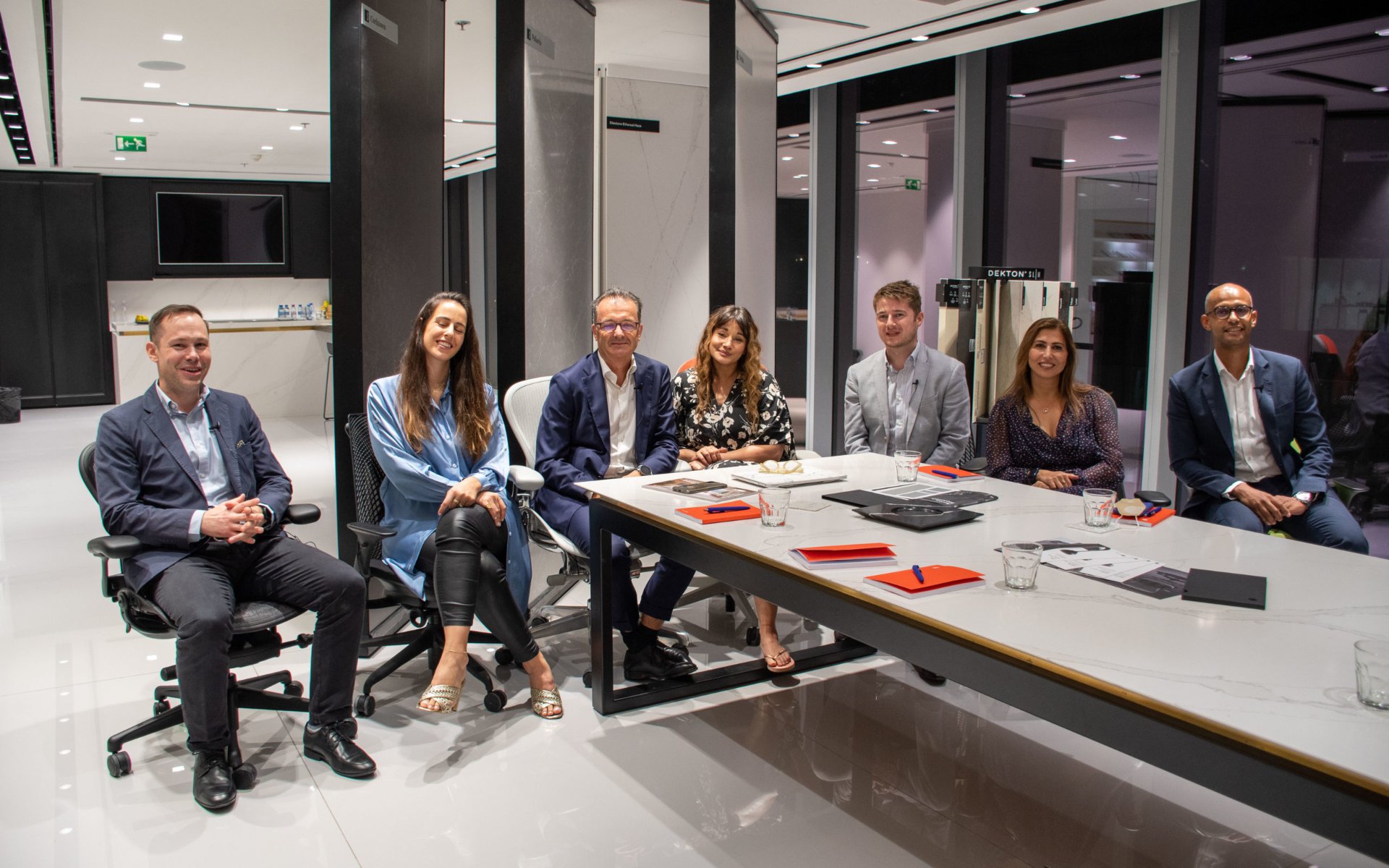
The Game Plan
If there’s one thing we learnt from this roundtable, it’s that all players involved in a project must take every opportunity they can to educate everyone involved. Manufacturers and contractors need to be as transparent as possible, and clients and designers should be on the same page. If cost is an issue, that’s ok. Communicating this early on will help balance trade-offs, and hopefully not disengage on any sustainable aspects.

